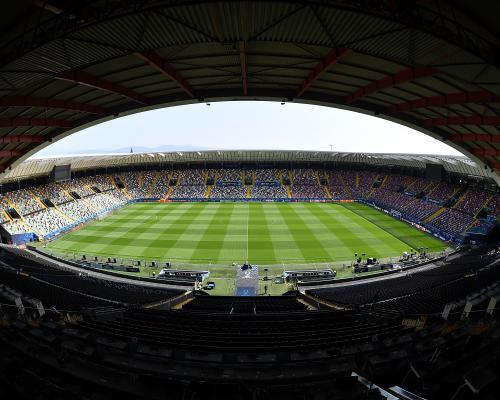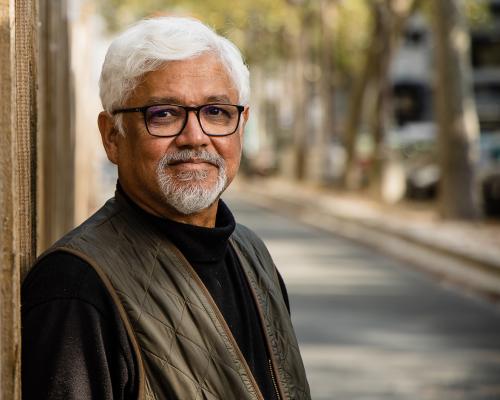
It has, for a while, appeared to be destiny. Benjamin Sesko’s arrival at Manchester United was third time lucky for last season’s Europa League finalists, having attempted to make a deal for the Slovenia striker when he was leaving Domžale in 2019 and again when he agreed to fly the Red Bull Salzburg nest in 2022, eventually joining up with RB Leipzig a year down the line.
Now United have their still-only-22-year-old man and if Sesko has been feted in the inner circles of European football since his mid-teens, one could suggest the wait has not only be worthwhile but that it could work in favour of Ruben Amorim as he attempts to author a dramatic uptick in the fortunes of the English game’s premier fallen giant.
And now, the time for talking and for contemplating is done. United have wanted their headline No 9, and Sesko has wanted his chance to shine in England. Both have had their wishes come true and both need to prove that their partnership can be a fruitful one because, beyond the hype, club and player have a lot staked on this, and really need it to work. Sesko’s debut is expected to come at home to Arsenal on Sunday.
Ever since Sesko arrived at Leipzig in 2023, it was strongly suspected this moment would come. From even earlier, perhaps. Sesko arrived in the Red Bull universe in 2019, signing his Salzburg deal a few days after turning 16, less than a year after Erling Haaland had done the same.
Haaland is a figure who frequently comes up when discussing and describing Sesko; not just because of entrusting his development to Red Bull’s finishing school but because of their comparative athletic profiles. Both men are 6ft 5in, both have the build that would suggest they would be traditional target men and both have lightning pace that one doesn’t expect from a player of that stature.
Yet from there, they diverge. If the physical characteristics of Haaland and Sesko are slightly misleading, so is the suggestion that they are similar players. The Norwegian, from his first steps in the Salzburg first team, had looked like the goal machine he has proved to be so emphatically in Dortmund and Manchester. Sesko, his successor, never really looked like doing the same, even if he struck 16 times in 30 Austrian Bundesliga games in his final Salzburg season.
What Sesko lacked in sheer goal volume, though, he made up for in his all-round game, which outstripped that of Haaland when he was in Austria (or Germany for that matter). In terms of running the channels, linking with teammates in the final third and being an authentic part of the team rather than just a penalty box predator, Salzburg-era Sesko was clearly the brighter bet. It was entirely legitimate, however, to wonder how regularly he might score in Germany after making the move to Leipzig.
The big success of his time with Leipzig was his arrival as a consistent goalscorer in a top European league. A pair of six-week droughts, one in autumn, another in early spring, meant he ended up with a lower Bundesliga tally last term than in his debut season, 13 compared with 14, but his ability to be decisive and make proper use of his natural gifts – strength, speed, a thunderous shot, the ability to peel away from defenders with the adroitness of a smaller man and ability in the air when required – has been clear.
Sesko’s spell in the Bundesliga, like Haaland’s, always felt like a loan in all but name and contractual detail. More than a finishing school, it was more a waiting room until an inevitable move to the Premier League.
Mikel Arteta’s longstanding interest in Sesko was no secret but the arrival of Andrea Berta at Arsenal (with his record of going big on established centre-forwards) shifted the club’s focus to Viktor Gyökeres, which opened the door for United to try again for Šeško.
The past two young forwards with hoped-for big futures who were lured to Old Trafford – Rasmus Højlund and Joshua Zirkzee – have hardly been resounding successes, so there must be real scrutiny on whether United can be the right club for Sesko and whether the player has made a wise choice.
If some have questioned his decision to join a club without European football this season – which would have been the same had he stayed at Leipzig – it is really about the medium term. Højlund and Zirkzee are two among countless examples of talented players who have arrived at Old Trafford and not become the players they were expected to be.
One could argue that Newcastle were Sesko’s safer bet, given that his aim will be for his Premier League trajectory to mirror that of Alexander Isak, transforming strong potential into all-conquering product. Amorim has successfully developed players beyond their wildest dreams (Gyökeres being the most famous example) so perhaps he can do so again, with a pre-season behind him and a squad more shaped to his liking.
Sesko’s temperament gives him a great chance; throughout this summer’s transfer saga he behaved in an exemplary fashion at Leipzig, with the sporting director, Marcel Schäfer, underlining this week that “his move is a loss both from a sporting and a personal perspective”. His success in the Premier League would be a significant corner turned for this latest United rebuild.







